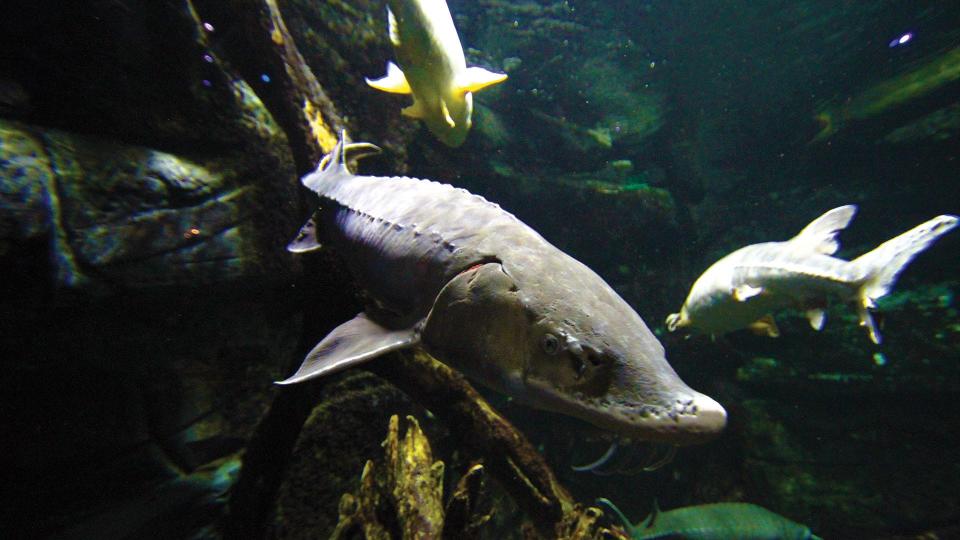This year's last supermoon will appear on Thursday. Here's what you need to know.
On Thursday night, be on the lookout for the "sturgeon moon."
The fourth and final "supermoon" of the year gets its name from the giant sturgeon fish of the Great Lakes and Lake Champlain, which were most frequently caught during this time of year, according to the Almanac.
Here's everything you need to know before taking in this celestial phenomenon.
What is a supermoon?
A supermoon is a full moon that occurs when the moon's orbit is closest to the Earth.
On average, supermoons appear about 7% bigger and roughly 15% brighter than a regular full moon, according to USA Today. This year, there are four supermoons, beginning in May with the "flower moon." The "strawberry moon" and "buck moon" occurred in June and July, respectively.
When can I observe the sturgeon moon?
The sturgeon moon will be visible on Thursday night, with peak illumination expected at 9:36 p.m. in Burlington, according to the Almanac. As of 2 p.m. on Wednesday, Weather.com predicts mainly clear conditions for Thursday evening, with temperatures hovering around 60 degrees.
For the best views, find an unobstructed lookout facing the eastern horizon; the moon is best viewed as it rises. You don't need any equipment for viewing, though a pair of binoculars can help deliver remarkable close-ups. The sturgeon moon will be the second-largest-looking full moon of the year, according to Forbes.
Skywatchers won't completely welcome this month's full moon, though, since it coincides with the Perseid meteor shower, according to Space.com. While observers in North America could normally view 50 to 60 meteors per hour during the meteor shower, the full moon will reduce visibility to 10-20 per hour at most, NASA says.
History of sturgeon in Vermont
Sturgeon are a group of large fish often referred to as "living fossils," known for their distinctive pre-historic look. The fish have a cone-shaped head, deeply forked tail, and distinctive whiskers near their snout. The sturgeon evolved around 136 million years ago and has remained relatively unchanged since, according to the Almanac.
More:One Vermont biologist’s joy: Fishing, studying lake sturgeon
The word "sturgeon" means "the stirrer," symbolizing the way these fish hunt for prey in mud and silt on river and lake bottoms. Sturgeons can live 80 to 150 years and grow more than six feet long.

There are 29 species worldwide, although their populations have torpedoed due to overfishing and habitat loss, according to the National Oceanic and Atmospheric Administration.
In Lake Champlain, sturgeon are the oldest, largest, and potentially rarest fish. It's been illegal for anglers to keep sturgeon in Vermont since 1967, and it's been illegal to intentionally fish for sturgeon since 1974, when the state listed them as endangered.
Contact Blaise Siefer at 978-505-4363 or BSiefer@freepressmedia.com. Follow him on Twitter at @Blaise_Siefer.
This article originally appeared on Burlington Free Press: Sturgeon supermoon occurs Aug. 11: What to know in Vermont.

